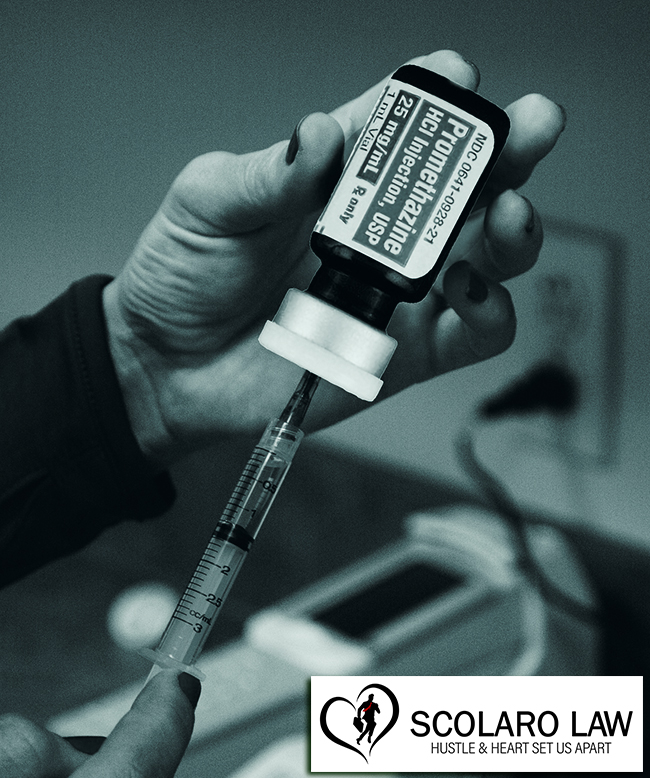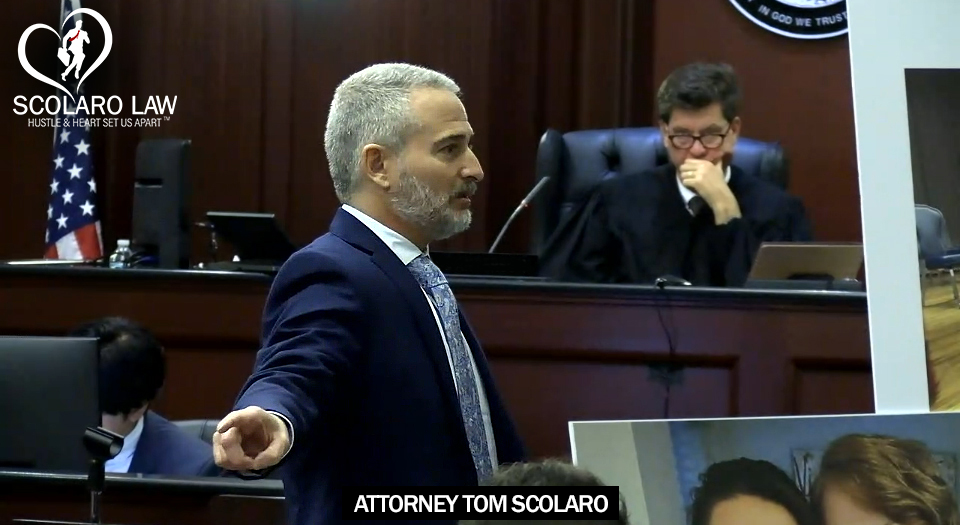
Get Started with a Free Consultation
If you were injured in an incident in Florida, contact us by filling out this form.
"*" indicates required fields
Medical Malpractice by Incompetent Cruise Ship Doctor Who Turns to Google for Help Results in $3.3M Arbitration Award
June 25, 2024
Ilija Loncar, a dedicated crewmember on a cruise ship, found himself battling an illness mid-voyage. Feeling nauseous, he sought medical attention from the ship’s doctor, Dr. Sebastian Campuzano. Ilija’s condition rapidly deteriorated after the ship’s doctor ordered an intravenous injection of 25 mg Promethazine, the maximum allowable dose, instead of following the manufacturer’s recommendation for deep intramuscular administration. This medical error led to a catastrophic outcome and the amputation of our client’s arm.
Promethazine hydrochloride is a caustic and highly toxic drug for which the FDA mandates a “black box” warning on its labels to alert healthcare providers of the severe risks associated with incorrect administration.
Understanding Black Box Warnings: Critical Information for Healthcare Providers
A black box warning, also known as a boxed warning or black label warning, is the most serious type of warning issued by the U.S. Food and Drug Administration (FDA) for prescription drugs. It appears prominently on a drug’s packaging insert and is designed to alert healthcare providers and patients about potentially serious or life-threatening risks associated with the medication.
Medications receive black box warnings when there is evidence of significant adverse effects that may outweigh their potential benefits in certain circumstances. These warnings are typically issued based on findings from clinical trials, post-marketing surveillance, or reports of serious adverse events. Common reasons for black box warnings include risks such as severe allergic reactions, organ toxicity, cardiovascular events, or increased risk of death.
Healthcare providers are mandated to be aware of and understand black box warnings because they highlight critical safety information that can impact treatment decisions. Ignoring or disregarding these warnings can lead to serious harm or even death for patients. Therefore, doctors must carefully weigh the risks and benefits of prescribing medications with black box warnings, ensuring that patients are fully informed and closely monitored for adverse effects. In practice, black box warnings serve as a vital tool for healthcare professionals to mitigate risks associated with prescription drugs, guiding informed decision-making, and promoting patient safety. They underscore the importance of ongoing vigilance and adherence to established safety protocols in medical practice.
Known Risks of Promethazine Administration – Severe Tissue Damages
Promethazine is a widely utilized injectable medication known for its antihistamine, sedative, anti-motion sickness, and anti-emetic properties. Despite its therapeutic benefits, promethazine presents substantial risks due to its vesicant nature and highly caustic effect on blood vessel intima and surrounding tissues.

While the drug’s label allows for slow intravenous (IV) push administration in clinical settings, serious local injuries frequently occur when done incorrectly. Known complications include burning, erythema, pain, swelling, vessel spasm, thrombophlebitis, venous thrombosis, and tissue necrosis, sometimes necessitating surgical interventions like fasciotomy or amputation.
The Institute for Safe Medication Practices (ISMP) has sounded the alarm about these risks and recommended re-evaluation of the FDA labeling, suggesting potential elimination of the IV route due to the severity and frequency of reported harm. ISMP and FDA agree that it is imperative that healthcare providers exercise extreme caution when administering promethazine, thoroughly educating themselves on the drug’s properties and warnings. Unfortunately for our client, the cruise ship doctor and the cruise ship nursing staff was ignorant on such risks and blew through all the red lights the FDA placed in their way.
The Critical Error
Following the doctor’s negligent instructions, the nurse injected Promethazine directly into Ilija’s right arm via an IV port. The injection was supposed to be administered slowly over two minutes. However, Ilija testified that the entire dose was pushed into his veins within seconds. According to vascular expert Dr. David Cossman, this rapid injection caused a severe arterial-like injury by overwhelming the normal blood flow.
Immediately after the injection, Ilija experienced excruciating burning pain, likening it to having muscles torn from his bones. Despite his complaints, the nurse continued the injection. Within hours, Ilija’s arm showed signs of necrosis, marked by erythema, tenderness, and cyanosis.
The Agonizing Wait
Shockingly, the ship’s doctor did not assess Ilija’s arm for hours and failed to examine the injection site or consult Ilija about his symptoms. During his deposition, the doctor admitted he had never read the Promethazine warning label or package insert.
Following cruise line policy, the ship’s doctor attempted to contact the Cleveland Clinic for guidance but failed to reach anyone. He admitted to calling only twice and instead of trying again, he simply gave up on getting a vascular consultation.
As Ilija’s condition worsened, the nurse tried massaging his arm, but the symptoms persisted. Meanwhile, lacking competence and expertise, the doctor resorted to looking for solutions on Google instead of consulting experts or following proper medical guidelines. The doctor’s refusal to consider a medevac for this obvious medical emergency was yet another critical lapse in care, confirmed under oath by the cruise line’s chief medical director who testified that his own doctor committed malpractice.
Too Little, Too Late
Ilija endured seventeen agonizing hours before the ship docked in Port Canaveral, finally allowing him to seek urgent medical attention. By then, it was too late. Paramedics described his arm as ischemic, severely swollen, blackened, and mottled from the elbow to the fingertips. Despite emergency fasciotomy at Cape Canaveral Hospital, Ilija’s prognosis was poor, and his arm was amputated days later.
The Reality Behind Cruise Ship Medical Care
Cruise lines often promote their ships as equipped with state-of-the-art medical facilities, promising reactive, first world treatment, and peace of mind for passengers. However, as Ilija’s case demonstrates, the reality can be starkly different. Dr. Campuzano, the doctor who mistreated Ilija was a 26-year-old graduate of the University of Caldas Medical School in Colombia, with limited clinical experience and no U.S. medical license. His primary experience came from a non-clinical training center and a brief stint in family medicine in Colombia. This underqualified background left him woefully unprepared for emergency medical care on a cruise ship, let alone respond to an emergency he created himself by his own negligence and incompetence.
Ilija Loncar’s Arbitration Award
As a crewmember, Ilija was required to resolve his case through arbitration rather than in U.S. courts. Our client, the cruise doctor, as well as cruise employees and expert witnesses testified live before the tribunal for a week. Considering the abysmal acts of negligence committed by the cruise doctor, the arbitrator ruled in our favor, awarding Ilija $3,337,500 in compensation for his suffering and loss.
The ground-breaking result sent shockwave through the cruise industry and beyond. Thomas Scolaro’s result was featured on multiple national media outlets including Fox News Channel, the New York Post or Newsweek, as well as numerous state and local media.
Scolaro Law’s Commitment to Justice
At Scolaro Law, our team of legal professionals has over one hundred years of combined experience representing cruise passengers and crewmembers who were injured at the hands of cruise ships doctors. These cases involve complex legal and medical issues, which require a deep understanding of maritime law, shipboard medicine, and evacuation protocols.
For decades, personal injury attorneys were barred from suing cruise lines for medical malpractice under the Barbetta Rule. However, the 2014 Franza decision overturned this precedent, allowing for lawsuits against cruise lines for onboard medical negligence. This ruling acknowledged the advancements in shipboard medical capabilities and the need for accountability in the face of growing medical incompetence.
Since 2014, Tom Scolaro has litigated over a dozen medical malpractice cases against cruise lines, making him the most prolific litigator in the country of such cases. These malpractice cases involved passengers who sustained strokes, heart attacks and infectious diseases, failure to diagnose, failure to treat, and failure to evacuate. Our unmatched experience in navigating the unique challenges of these cases ensures our clients the most driven, most professional, and most transparent representation.
If you or a loved one have been a victim of medical malpractice on a cruise ship, contact Scolaro Law immediately to discuss your case. Our team was put together for one purpose, to restore justice and to obtain the best result in every case.

